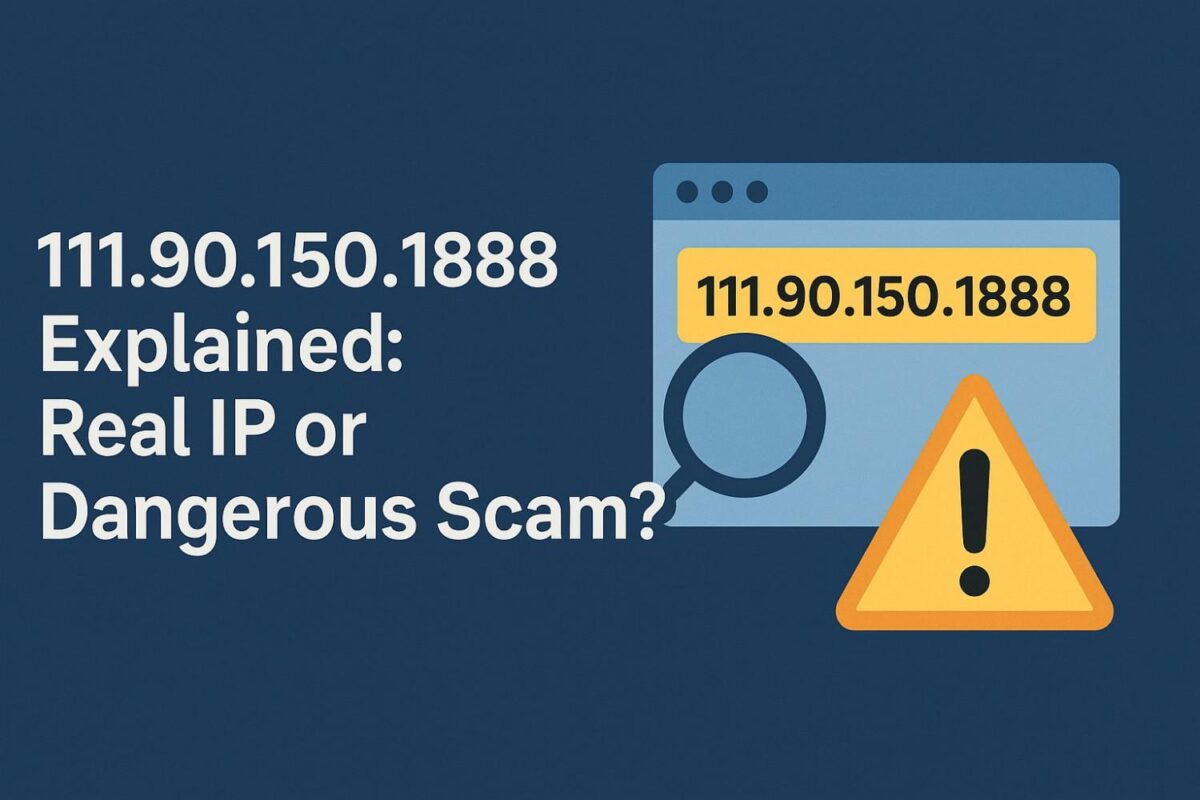An IPv4 address has four numbers (0–255) separated by dots. “111.90.150.1888” has an invalid last block (“1888”), so by definition it’s not routable on the public internet. In practice, that string appears in copy-pasted “mirrors” or listicles that also name 111.90.150.188 and 111.90.150.204—two addresses that do exist and are frequently mentioned in posts about “bokeh” or “museum” videos (a common euphemism for adult content in Southeast Asian tech blogs).
Why do people search it?
Because low-quality reposts and TikTok/Telegram snippets recycle the number with typos. If you chase it, you usually land on forum threads, scraped pages, or IP-lookup tools that point back to 111.90.150.188/.204, not “1888.”
Is 111.90.150.188 linked to shady content or security risks?
Multiple reputation scanners flag 111.90.150.188 with proxy/abuse signals. IPQualityScore, for example, labels it as a proxy connection associated with recent spam-blacklist or abusive activity—exactly the profile you’d expect for traffic that tries to mask origin or serve questionable streams. That doesn’t prove everything behind the IP is illegal, but it does mean elevated risk.

What about geolocation and hosting?
Public geolocation tools place 111.90.150.188 in Malaysia and surface commercial hosting data; these pages are commonly used in threat triage because they reveal whether an address is from a consumer ISP or a data center. When the latter is true, it often correlates with proxy/VPN usage or content distribution rather than a household connection.
Are those “video bokeh/museum” posts legit—or bait?
Indonesian-language tech blogs have long posts listing permutations like 111.90.150.204, 111.90.150.188, and typos such as “111.90.l50.255.” Most of these pages warn about the risks while also trying to farm clicks from people hunting explicit videos. That mix of warnings and hype is a red flag: it’s classic traffic bait, not a trustworthy streaming source.
How do you stay safe if you run into 111.90.150.188/1888 links?

Step 1 — Don’t paste raw IPs into your browser
Direct-IP hosts often lack TLS certificates, which means no HTTPS and no identity assurance. That’s a playground for malware and spoofed pages.
Step 2 — Check reputation before you click
Use independent scanners (e.g., an IP reputation checker or safe-browsing tool). When a scanner says “proxy + recent abuse,” treat that as a hard stop. In the case of 111.90.150.188, third-party scoring shows proxy/abuse signals.
Step 3 — Keep your devices patched
Most drive-by infections target outdated browsers, plugins, and OS builds. Update first; explore later (or better, don’t explore at all when signals are bad).
Step 4 — Prefer reputable platforms
If your intent is legitimate streaming, use legal services or creator-owned sites. If a link must hide behind an IP and a VPN, ask why.
Could a VPN make it “safe” to visit?
A VPN only hides your IP. It doesn’t disinfect the destination. If the host or stream is malicious, a VPN won’t stop phishing, rogue downloads, or credential theft. Given the reputation flags around 111.90.150.188 and the fact that 111.90.150.1888 isn’t even valid, there’s no upside in trying.
Is there any legitimate reason these IPs trend?
Occasionally, adult-content rumor mills and scraper sites lift each other’s lists to harvest search traffic. Some pages explicitly name 111.90.150.188/.204 while simultaneously warning readers not to visit—another signal that the real “product” is ad impressions, not trustworthy information.
Frequently Asked Questions
1. Is 111.90.150.1888 a working streaming address?
No. The final block “1888” makes it an invalid IPv4 address, so it won’t resolve on the public internet. Mentions typically trace back to 111.90.150.188 or .204, which are real but risky.
2. Is 111.90.150.188 safe to open in a browser?
Public scanners flag 111.90.150.188 for proxy/abuse behavior, which correlates with spam and risky activity. That’s not “proof of malware,” but it’s more than enough reason to avoid direct access and to block the address at your router or endpoint if you manage networks.
3. Where is 111.90.150.188 located?
Geolocation databases place it in Malaysia with commercial hosting characteristics, not a residential ISP. Geodata can vary by provider, but multiple tools show similar regional placement, which is sufficient for high-level risk triage.
4. Why do blogs mention 111.90.150.204 alongside 111.90.150.188?
Because both IPs appear in the same rumor ecosystem around “bokeh/museum” video links. Those posts often list many permutations (including typos) to capture searches, then warn about risks—an SEO pattern more than a reliable guide.
The bottom line (and why you should skip the hype)
If you’re here because a friend or a short-form clip dropped 111.90.150.1888, now you know the truth: it’s not a real, routable address—and the 111.90.150.188 family it points toward carries proxy/abuse flags and bait-blog baggage. Your safest move is simple: don’t chase raw IPs for streams; stick to reputable platforms, keep your software current, and use reputation tools to verify claims before you click.
Conclusion: When it comes to shadowy “secret links,” less is more. 111.90.150.1888 won’t take you anywhere worth visiting, and the addresses it imitates aren’t worth your time or risk budget. Treat the keyword as a cautionary tale, not a shortcut—and you’ll save yourself headaches, malware scans, and a whole lot of regret.

